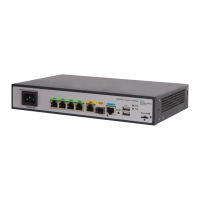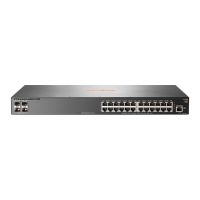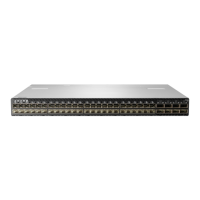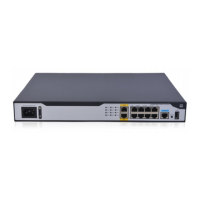245
break trap, falling threshold break trap, trigger-condition detection failure trap, and set-action trigger
failure trap.
For the traps to be sent correctly, you must also configure SNMP on the device. For more information
about SNMP configuration, see Network Management and Monitoring Configuration Guide.
Examples
# Enable the event MIB trap feature.
<Sysname> system-view
[Sysname] snmp-agent trap enable event-mib
startup (trigger-existence view)
Use startup to specify existence trigger test types for the first sampling.
Use undo startup to remove the existence trigger test types for the first sampling.
Syntax
startup { absent | present }
undo startup { absent | present }
Default
The existence test types for the first sampling are present and absent.
Views
Trigger-existence view
Predefined user roles
network-admin
Parameters
absent: Monitors the absence of a MIB object.
present: Monitors the presence of a MIB object.
Usage guidelines
For the first sampling, an event is triggered when the following conditions are met:
Both the startup and type commands specify the existence test type as present and the state
of the monitored object changes to present at the first sampling. If the monitored objects are
wildcarded, the event is triggered independently for each wildcarded object.
Both the startup command and type commands specify the existence trigger test type as
absent and the state of the monitored object changes to absent at the first sampling. If the
monitored objects are wildcarded, no event is triggered.
Examples
# Remove the present test configuration for the first sampling.
<Sysname> system-view
[Sysname] snmp mib event trigger owner owner1 name triggerA
[Sysname-trigger-owner1-triggerA] test existence
[Sysname-trigger-owner1-triggerA-existence] undo startup present
Related commands
type
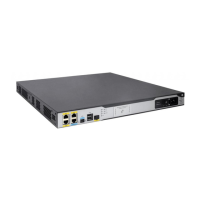
